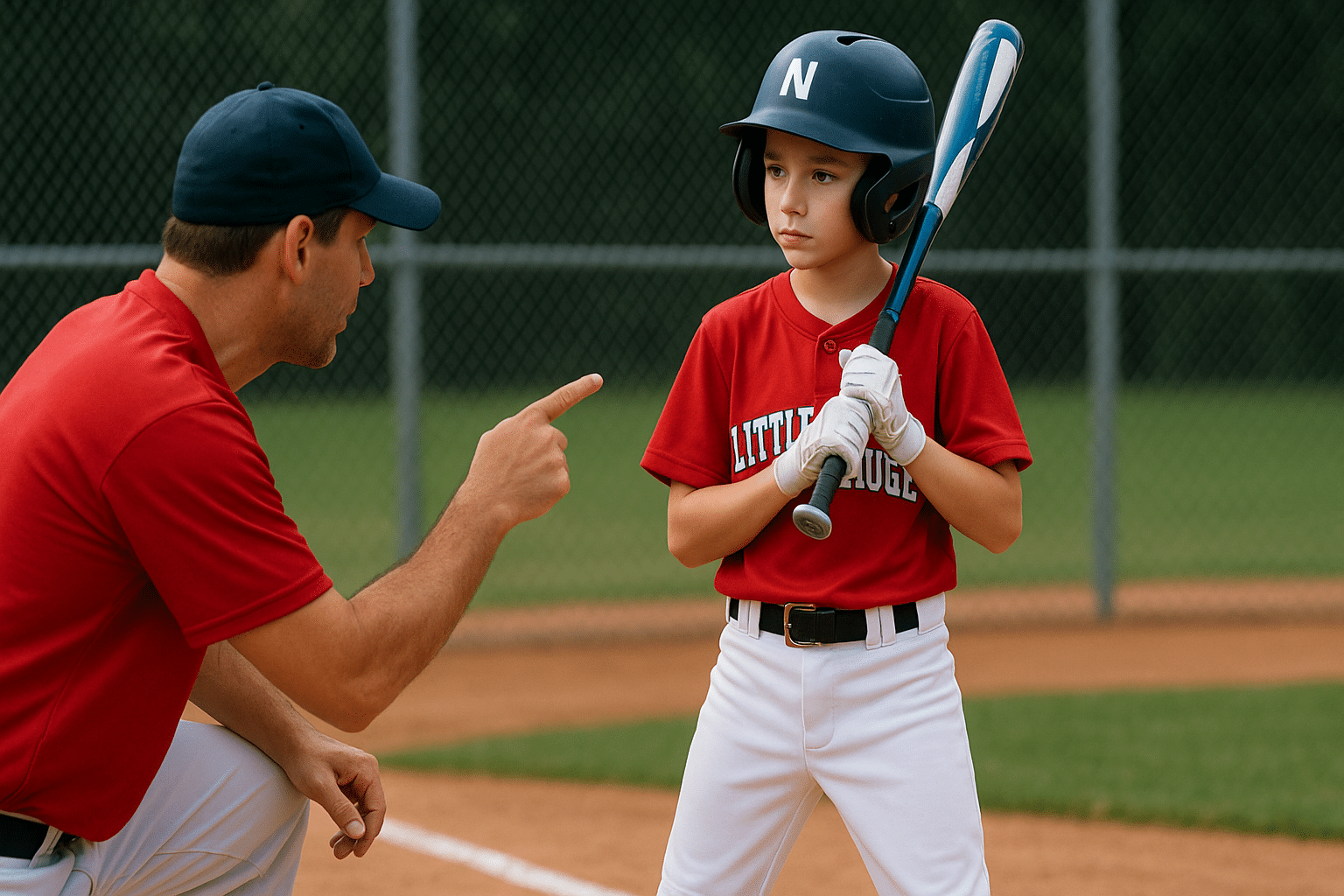What Are The 7 Steps to Teach Hitting Mechanics in Little League In 2025?
Teaching hitting in Little League doesn’t have to feel like herding cattle.
Whether you’re new to the dugout or a veteran coach, one thing’s clear—developing confident, consistent hitters starts with the basics.
But let’s face it: kids learn best when things are simple, fun, and structured.
That’s why this 7-step guide is built for real-world success.
We’re not throwing jargon at 9-year-olds—we’re breaking down proven hitting mechanics into easy cues, age-appropriate drills, and practical tips you can use at your next practice.
From setting up a safe environment to teaching hand path and contact point, these steps will help you keep your players engaged, improve their swing mechanics, and make progress feel like play.
Let’s build better hitters—without the chaos.

1. Set the Stage with Safety
Before a single swing, build a hitting zone that’s safe, structured, and stress-free. Confident hitters start with a safe space—and that starts with you.
Coach’s Checklist
✅ Helmets snug, undamaged, and properly fitted
✅ Bats the right size and checked for cracks
✅ L-screens and nets securely in place
✅ Field clear of rocks, bags, loose balls, or holes
Define Safety Zones
Use cones or chalk to mark clear areas for:
- On Deck
- Hitting
- Waiting
Explain why each zone exists—kids are more likely to follow the rules when they understand the why.
Hydration Breaks
Hot day? Build in regular water breaks and encourage kids to bring labeled bottles. No one performs well when they’re overheating.
Set a Routine
Start every practice with a quick reminder:
📢 “No swinging until Coach says go!”
Player Challenge
Create a little incentive: hand out a “Safety Star” each practice to the player who shows the best awareness. Bonus—it builds team culture, too.
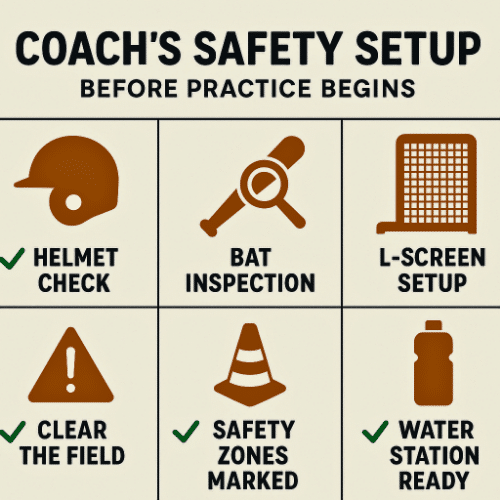
2. Nail the Stance with Visual Cues
A solid stance is the foundation of every great swing—and kids learn it best when they can see it and feel it.
Use simple comparisons:
- 🏄 “Stand like a surfer” – balanced and ready
- ⚔️ “Bat like a sword” – angled, controlled grip
- 👀 “Eyes on the pitcher” – always!
Coaching Tools:
- Use chalk or tape to mark where feet should go
- Demonstrate the stance yourself—or better yet, have another player model it
- Reinforce the stance with a mirror or video if available
Quick Fixes (Without Over-Coaching):
- Gently adjust foot angle, bend the knees slightly, or move the bat position
- Always explain why you’re making the change: “That helps you stay balanced,” or “That gives you more power.”
Player Challenge:
🎯 Have players freeze in their stance and hold it for 10 seconds—reward the most balanced posture with a “Stance Star” of the day.
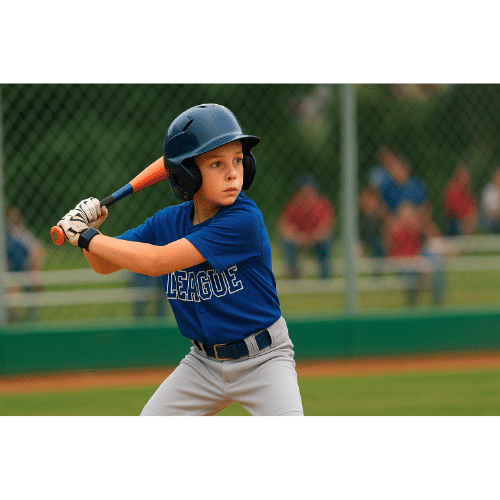
3. Simplify the Grip
A proper grip gives hitters the bat control and confidence they need to drive the ball—without overthinking it.
What to Teach:
- ✊ Line up the door-knock knuckles (boosts bat speed and whip)
- 🪥 Hold it like toothpaste—firm, not tight (aim for 5 out of 10 pressure)
- ✋ Try the high-five drill—have them “high five” the barrel, then wrap hands naturally around the handle
Coaching Tools:
- Use colored bat tape to mark where each hand should go
- Let players test grip strength with quick squeezes to find that “just right” pressure
Player Challenge:
🕵️ “Grip Detective” – Have players pair up and inspect each other’s grips. Can they spot a knuckle misalignment or a death grip?

4. Train Swing Path with Stories
The swing path can be tricky to teach—unless you turn it into a story. Kids latch onto visuals and metaphors faster than mechanics.
Use Kid-Friendly Language:
- 🚂 “Your hands are the train, the ball is the station” – keep the path direct
- 🛤️ “Short tracks, not loops” – avoid long, loopy swings
Drills That Reinforce the Story:
- 🧱 Fence Drill – Stand a bat-length from a fence and swing without hitting it
- 🟡 Pool Noodle Path – Hold a pool noodle or bat vertically as a target plane to guide the swing path
Feedback Tools:
- 📱 Use a mirror or phone video to show swing path (slow-mo helps!)
- 👀 Pause and replay so kids can see what “short tracks” really look like
Player Challenge:
🚆 “Train Conductor” Game – Players take turns “conducting” perfect train swings. Best swing of the day earns the conductor’s cap (or a sticker, if you’re fresh out of caps).
Conductor” swing game.
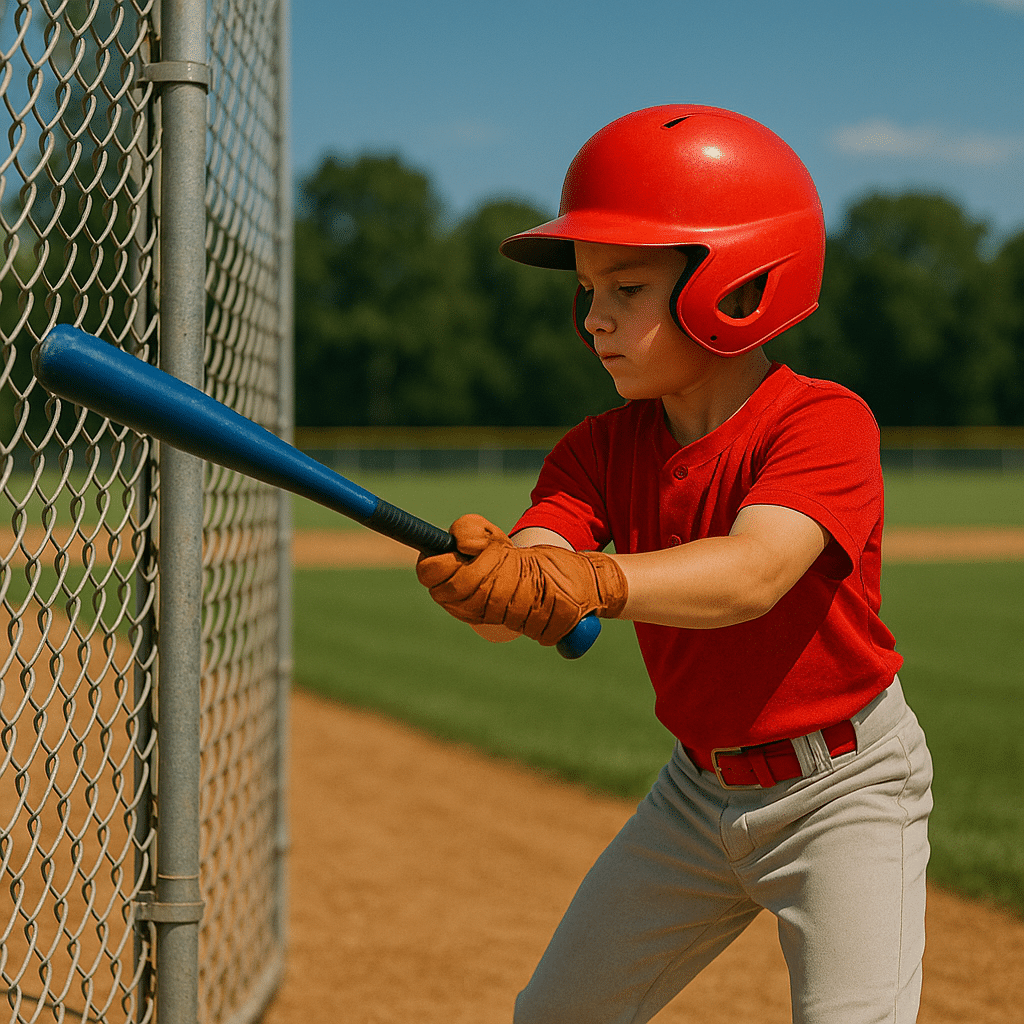
5. Fix the Usual Flaws—Fast
Every young hitter picks up a few bad habits—but fixing them doesn’t have to be a drag.
Keep it simple, playful, and focus on one thing at a time.
Common Fixes:
- 🟡 Stepping Out? Tape a stride line on the dirt to give them a visual target.
- 🔄 Opening Up Too Early? Use the cue: “Hide your belly button from the pitcher.”
- 👁️ Pulling the Head? Stick a small sticker inside the helmet—remind them to “keep your eyes on the dot.”
Keep It Fun:
Turn corrections into challenges. Track improvements.
Cheer effort more than results. If they’re trying, they’re winning.
Player Challenge:
🎯 “Freeze Head” – Players swing but freeze their head through contact. Best head discipline gets the “Laser Focus” award.

6. Teach Based on Skill, Not Age
Not every kid is ready for launch angles and leg kicks.
Tailor your approach by age—and adjust based on confidence, not just ability.
What to Emphasize:
- 🧢 Ages 7–8: Keep it fun. Prioritize contact, consistency, and simple repetition.
- ⚾ Ages 9–10: Layer in timing, balance, and early rhythm cues.
- 💪 Ages 11–12: Start building power. Add situational hitting (runner on third? Less than two outs?).
Coach’s Corner:
Confidence drives progress.
If a player is struggling, simplify the process.
If they’re cruising, challenge them.
Don’t let age be the ceiling—meet them where they are.
Player Challenge:
📶 “Level Up” Milestones – Reward players with badges, wristbands, or dugout shoutouts when they hit new skills (first line-drive? first opposite-field hit?).
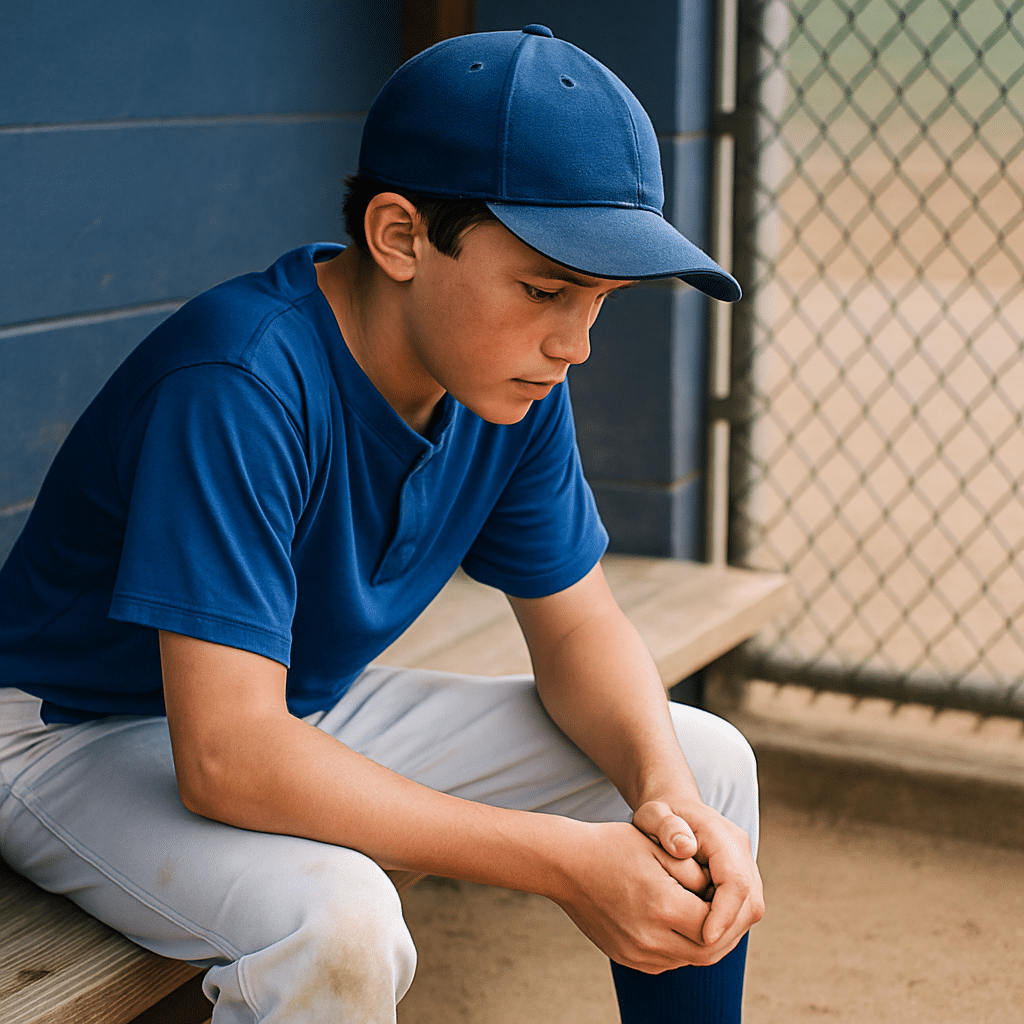
7. Use Practice Plans That Actually Work
Forget over-complicated drills and marathon practices. Consistency beats complexity—especially with younger players. Keep it moving, keep it fun, and keep it structured.
🕒 30-Minute Practice Plan (No Guesswork):
- 5 min: Quick stance + grip review
- 10 min: Tee work (focus on contact and cues)
- 10 min: Toss drills (front toss, side toss, mix it up)
- 5 min: Fun wrap-up game or hitting challenge
📆 Weekly Practice Flow:
- Mon = Mechanics – stance, grip, swing path
- Wed = Reps & Drills – tee, toss, progressions
- Fri = Fun + Challenges – games, competitions, and team bonding
Player Challenge:
🏅 “Practice MVP” – Shoutout one player each practice for standout effort, improvement, or team spirit. Keeps energy high and kids coming back.

Frequently Asked Questions
How often should kids practice hitting?
2–3 times a week, 30–60 minutes max. Quality reps > quantity.
What’s the best way to teach grip?
Use the “door-knock” knuckle alignment and have them practice with a high-five drill.
How do I help kids stop stepping out?
Use visual lines in the box and repeat cues like “step to shake hands.”
What do I do if the kids are afraid of the ball?
Use soft balls, focus on technique, and build confidence before velocity.
How do I keep hitting practice fun?
Games, competitions, nicknames, and celebration. Keep the energy up.
What’s the most common swing flaw?
Dropping hands = long loop. Use the Fence Drill or noodle to fix it.
Final Thoughts: Keep It Simple, Keep It Fun, Keep Showing Up
Teaching hitting in Little League isn’t about perfection—it’s about progress.
Whether you’re working with brand-new 7-year-olds or 12-year-old All-Star hopefuls, your job as a coach or parent is to create a space where kids can grow their confidence, sharpen their skills, and fall in love with the game.
These 7 steps aren’t magic.
But they’re practical, proven, and built to help you lead better practices without overcomplicating things.
From footwork to fun drills, from safety checks to swing path cues, your steady presence and positive energy matter more than any stat line.
Remember:
- Keep it age-appropriate.
- Celebrate effort, not just results.
- Make practice something they look forward to—not just something they “have to do.”
And when in doubt? Keep it moving, keep it simple, and keep swinging.
Bonus: Tips for Coaches
- Have backup gear ready
- Learn your players’ personalities
- Use frequent, specific praise
- Keep sessions upbeat and game-like
- Be calm and lead by example
- Adapt your style to the kid
- Celebrate effort as much as outcomes
- Foster team unity
- Rotate leadership opportunities
